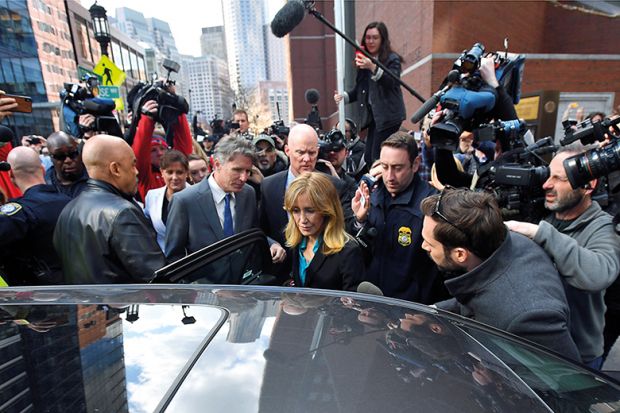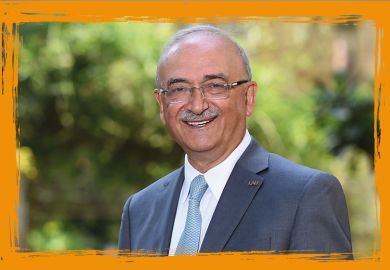Many recent critiques of American higher education begin with lamentations over the lost “golden age” of the post-Second World War era through to the early 1980s. This period saw the democratisation that started with the GI Bill, which provided unprecedented opportunities for millions of veterans to obtain free college degrees as rewards for their service. Few could have afforded college otherwise. Educational opportunities for young men and women in the late 1950s through to the early 1980s proved no less important. Widespread support for public higher education as a crucial investment for the entire country led to low tuition fees at public institutions that did not saddle students with heavy debts upon graduation.
Starting in the 1960s, college selection was based on the idea of “fit”, or where students were likely to feel happiest. And we still subscribe to what Paul Tough calls “the official line”: “Don’t go crazy trying to get into a super-elite college! Just choose the school that makes you happy, where you’re going to find your true identity and become your authentic self. You’ll get a good education wherever you go.” So what’s the problem?
That is the question posed in Tough’s readable kiss-and-tell study. Based on interviews with students, parents, faculty and admissions officers, which personalise the mammoth amount of data that undergirds his analysis, he gives the lie to the relationship between college admissions and meritocracy. More than previous critics, he argues that America’s foundational myth of equal opportunity for all has been undercut by a deeply unfair educational system that promotes the rich and hurts the poor. When it comes to college selection and admission, income trumps merit.
Higher education became less of a stimulus for upward mobility in 1983. That was the year US News and World Report started publishing ranked lists of colleges, based largely on students’ scores on the ACT (American College Testing) or the SAT (originally the Scholastic Aptitude Test, but now simply the SAT – half-jokingly dubbed the Scholastic Affluence Test). These standardised tests supposedly assess students’ aptitude but actually, according to Tough and many other critics, merely measure students’ ability to take these particular tests. Partially to maintain their academic ranking, college admissions offices started relying more and more on these tests. And students came to base their college selection on rankings, that is, on the test scores of a college’s incoming class.
Although Tough’s bête noire, the College Board, which developed and administers the SAT, claims that its test expands access to college and levels the playing field for poor students, the opposite is really the case. Even if some colleges have made their applications test-optional, for most elite schools standardised tests that perpetuate inequality are still the gold standard. The poor rarely benefit when the SAT and ACT wag college admissions.
High test scores correlate with high income. These tests privilege the rich, who can afford expensive test preparation. Consider Tough’s extensive interview with Ned Johnson, who charges $400 an hour for test-prep tutoring. Although Ned dismisses the tests as “a bunch of malarkey”, he addresses student anxiety, cheerleads and provides test-taking tricks. A typical student jumped from the 80th percentile to the 97th percentile on the ACT.
If colleges once helped expand social mobility, they now perpetuate economic division and inequality to the extent that a degree from any but the most selective schools is less a guarantee of upward mobility than a “shield against downward mobility”. The type of college that students attend correlates with their future earnings. Those who attend highly selective colleges are more likely to become (or remain) wealthy. Despite the efforts of many sincere individuals and programmes, few poor students are admitted to elite colleges, which favour wealthy, test-prepped, high-scoring students. Tough finds that higher education, which has the potential to increase upward mobility, has become an obstacle that perpetuates social rigidity. The poor remain poor and the rich get richer.
According to Lauren Rivera’s study Pedigree: How Elite Students Get Jobs (2015), this self-perpetuating system is rigged: applicants for jobs in elite professional services found that what mattered most – even more than how students actually performed once they got to college – was where they went (largely determined by socio-economic status). College admissions offices were doing the sifting for recruiters.
This book lifts the veil on some of our most valued beliefs. Take the argument by top-ranked colleges that they contribute to the overall increased diversity of American educational institutions. Tough demonstrates that, while elite colleges may publicly claim to attract high-achieving poor, diverse students, they actually accept many more low-achieving, high-income students. Their commitment to diversity has never been as genuine as that of some less prestigious schools. At elite colleges, many non-white students come from different countries and have wealthy backgrounds similar to their affluent white classmates, while the handful of impoverished students of colour feel uncomfortable and isolated. Not only do they lack cultural capital, they rarely find students from similar backgrounds.
When Tough changes his focus from applicants to admissions, he finds that colleges court rich students with good test scores who are likely to enrol. It’s all about the bottom line: to hit the demographic and financial sweet spot. This is achieved through balancing the acceptance of the students they want with the students they need to meet their monetary targets. And to do this, many admissions offices use enrolment management systems that rely on big data and predictive analytics. This often results in the appalling practice of offering merit aid and tuition discounts to wealthy students to entice them to attend.
Schools such as Harvard may take a more personal approach, using secret files and lists that provide back doors to admit rich students who should have been turned down. Case in point: Donald Trump’s wealthy son-in-law and senior White House adviser, Jared Kushner. Harvard overlooked his high-school grades and test scores, which fell well below their normal standards for admission. Why? It may have had something to do with his father’s $2.5 million donation to Harvard, made just as Kushner started applying to colleges.
Like Christopher Newfield’s The Great Mistake: How We Wrecked Public Universities and How We Can Fix Them (2016), this study is laced with deep anger at the betrayal of Americans’ historic faith in public higher education. Yet The Great Mistake, for all its pessimism, holds out hope for change if universities improve their educational quality and stop their self-defeating imitation of private sector corporate models and their overspending on facilities. By contrast, Tough’s equally compassionate but more cynical book provides one sad tale after another of the huge challenges facing even the most determined and brightest working-class students.
The official line, that students should choose colleges where they will be happy and find a good fit, still persists. But for Tough, the real lesson is “Get your scores as high as you can. Go to the most selective school that will admit you, period.” Shattering our belief in meritocracy as the basis for college admissions, this mantra is the real takeaway from this book, at least for achievement-oriented students who want to raise or maintain their class status. Although the author reserves his harshest criticism for standardised tests, especially the SAT, this message ends up reinforcing their importance.
Paging Ned Johnson.
Deborah D. Rogers is professor of English and Howard P. Segal is professor of history at the University of Maine. Their co-edited book Becoming Modern, a history of their university from 1965 to 2015, will be published later this year.
The Years that Matter Most: How College Makes or Breaks Us
By Paul Tough
Penguin Random House
400pp, £12.99
ISBN 9781847947970
Published 12 September 2019
The author
Writer and broadcaster Paul Tough was born in Toronto and lived there until he went to university at the age of 17. He recalls “quite a choppy university career. Right after high school, I attended Columbia University, but I dropped out after one semester and spent a few months bicycling around the southern United States.” After transferring to McGill University in Montreal for a couple of years, he “dropped out again to take an internship at Harper’s Magazine in New York, where I went on to work for most of my twenties. I never went back to finish my degree…I think my scepticism about higher education in my own life helped to shape the way I’ve written about education as a journalist.”
Tough’s earlier books include the best-selling How Children Succeed: Grit, Curiosity, and the Hidden Power of Character (2012) and Helping Children Succeed: What Works and Why (2016). The first of these, he says, includes a chapter exploring how “the inequities and disparities I was finding in primary and secondary education in the United States were even worse at the post-secondary level. I wanted to understand why that was true, and whether there was anything we might do to change it. Those questions are what pushed me to write this new book.”
Asked about the specific changes he would like to see, Tough flags up three: “The first would be to make admissions at selective private institutions more balanced and equitable. At those institutions, rich students far outnumber low-income students. The second is for universities to focus more on helping their students – especially their first-generation students – to succeed and graduate. That starts with helping them to feel a sense of belonging and potential on campus. And finally, American taxpayers need to invest much more in all levels of public higher education.”
Matthew Reisz
POSTSCRIPT:
Print headline: The myth of meritocracy
Register to continue
Why register?
- Registration is free and only takes a moment
- Once registered, you can read 3 articles a month
- Sign up for our newsletter
Subscribe
Or subscribe for unlimited access to:
- Unlimited access to news, views, insights & reviews
- Digital editions
- Digital access to THE’s university and college rankings analysis
Already registered or a current subscriber? Login








